Revisiting Chinatown
It has been a few years since before COVID that I’d visited Chinatown. While working the last few months on the Pasig River Esplanade project, I took the opportunity to roam around Binondo to check out its new buildings as well as its heritage sites and structures.
I would take the Binondo Bridge across to the northern bank of the river and into Chinatown. The ramp from the bridge would set you down, after a slight twist, on San Fernando Street. Turning right from there you come to the first landmarks, the San Fernando Bridge over the Estero de Binondo (the bridge ramp now covers most of it), and the oldest panciteria in the country, Panciteria Macanista y Buen Gusto. This is the panciteria mentioned by Jose Rizal in El Filibusterismo. Unfortunately, the structure is dilapidated, and its fate is unsure.
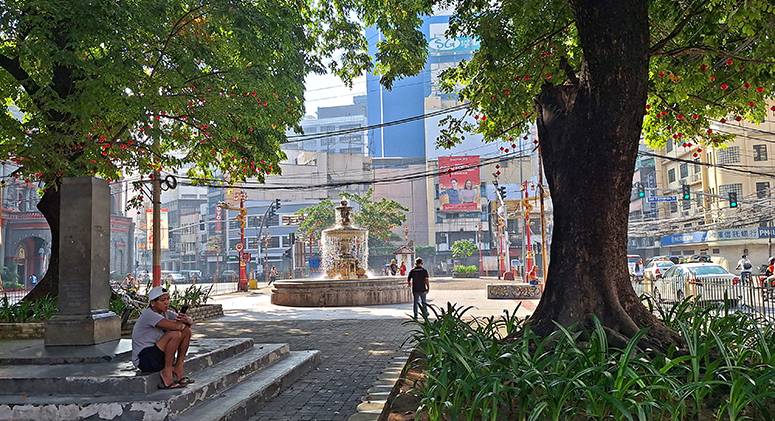
At the end of this drive is Plaza San Lorenzo Ruiz, a Spanish-era open space that complements the historic Binondo Church, which is now the Minor Basilica of San Lorenzo Ruiz. The plaza and church are named after the saint, a Binondo native of Chinese ethnicity, who was martyred in Japan in the 17th century.
Binondo rivals Hong Kong and Singapore’s central districts, but sadly without the benefit of a subway system, comprehensive urban planning, or people-friendly urban design.
The plaza was first called the Plaza de Binondo and established as the Chinese settled in the district after being expelled from Intramuros in the 1600s. Later, the one-hectare open space was renamed Plaza Calderon dela Barca, after an obscure Spanish writer. The church was established by Dominican priests at the same time. The structure today is the third incarnation after its destruction in two wars, the British invasion of 1762, and the Second World War.
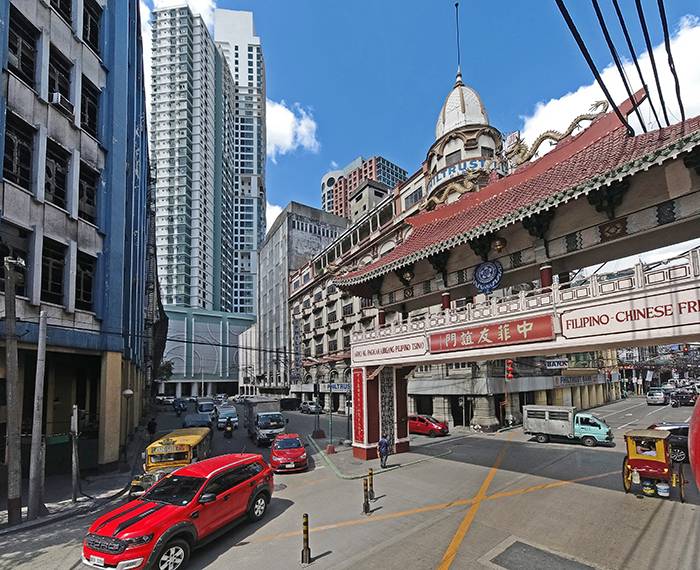
Binondo Plaza was ringed by a small road traversed by calesas until the tranvia was introduced in the late 1800s. Car traffic in the 20th century has eaten away at the space, leaving only a fourth of a hectare left for the actual pedestrian space. Two fountains from the Spanish period grace both ends of the plaza. The statue of San Lorenzo Ruiz now anchors the center. It is a much-used public space, as I noted many people always there, seated under the canopy of its magnificent narra trees.
The other route I took to get back to my home in Pasig City was to cross over the Jones Bridge. The four allegorical statues on tall bases that adorned the bridge in the 1930s have been reconstructed and ornate lighting put in. Landing on the other side are two Chinatown arches and two plazas: Plaza Moraga on Quintin Paredes corner Escolta, and Plaza Cervantes right behind it.

I will not delve into the controversy of the two arches, but I do believe that one should be enough. The larger and newer one, built in 2015, is reportedly the largest Chinatown arch in the world. The older second one (completed in 1975) could be relocated to another portal of Chinatown, possibly the Juan Luna entry at the corner of CM Recto.
In any case, the two heritage plazas of Chinatown should be recovered, repaved in its original granite cobblestones (from China), and repurposed as modern public plazas that are pedestrian- and tourist-oriented.
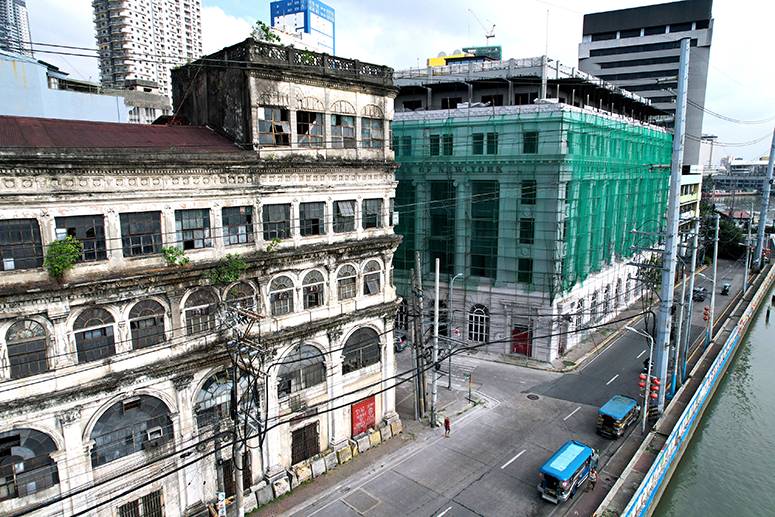
Plaza Cervantes was the more important and larger of the two. Until the 1960s all the major banking and insurance companies had their headquarters around the plaza or on streets nearby. The Hongkong and Shanghai Bank building was at the corner and still survives today as a café and restaurant. The First National City Bank and El Hogar buildings a block away by the river are being redeveloped, although the work on the El Hogar does not appear to be moving.
The Chinabank building nearby has also shown the way for finance corporations to acknowledge their beginnings in the district and conserve their built heritage. The building has been expertly conserved and still houses the bank’s district operations, as well as a museum of its corporate history.
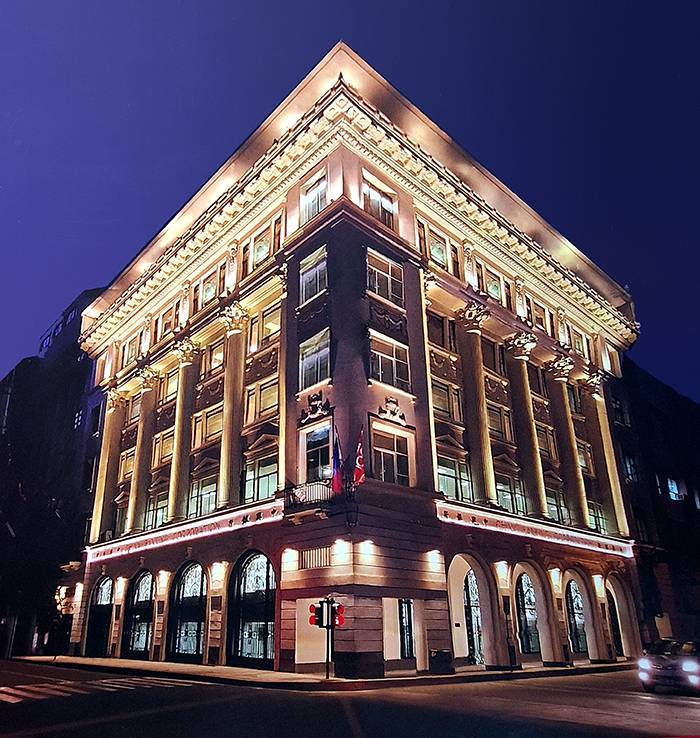
Even with the heritage buildings along the river, the Escolta, and the three plazas conserved for posterity, the rest of Manila’s Chinatown is growing. The skyline of this district, which spills into Sta. Cruz and San Nicolas, has changed from six-story concrete structures of the mid-20th century to today’s glass and steel skyscrapers with an increasing density of residential condominiums and shopping malls. It rivals Hong Kong and Singapore’s central districts, but sadly without the benefit of a subway system, comprehensive urban planning, or people-friendly urban design.
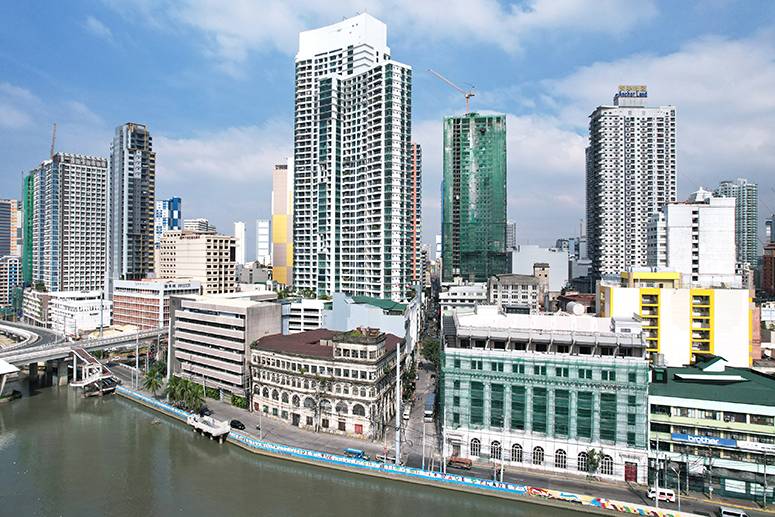
Hopefully with a change of leadership from a new generation of hua ren qu, the district will build on its heritage and take advantage of opportunities like the Pasig River Esplanade with its ferries, embark on a complete retrofit of its urban utilities, clean all its esteros, and adopt pedestrianization and active transport for mobility.
The Year of the Dragon in dawning and with it, good luck, strength of community, and health of the economy. This augurs well for Chinatown and the Filipino-Chinese community.



